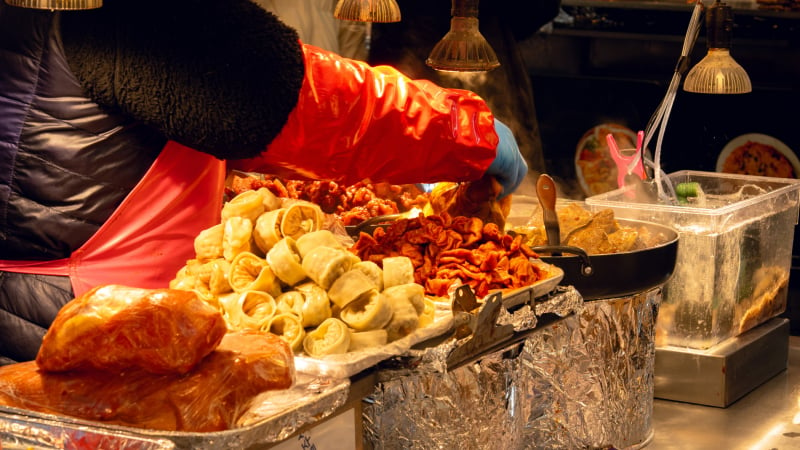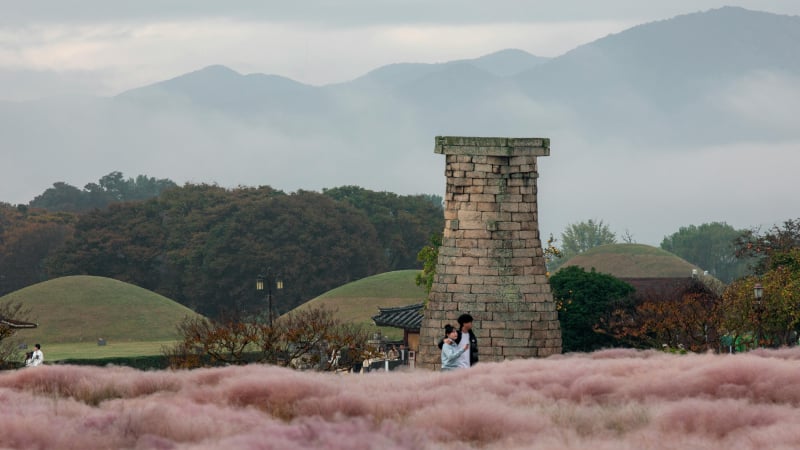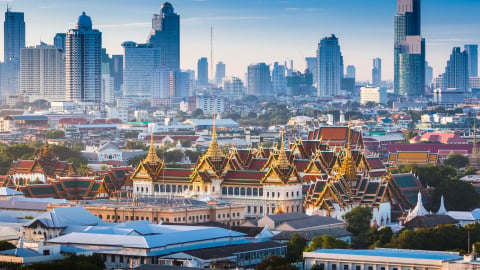From a luxurious dessert of the aristocracy, bingsu has gone through a long journey to become a beloved national culinary symbol in Korea. Not only attractive for its cool taste and eye-catching appearance, bingsu also carries an interesting history, associated with the art of preserving and using ice, a typical cultural feature of the kimchi land from many centuries ago.
During the winter, ancient Koreans would harvest ice from rivers and store it in specially insulated ice warehouses for use throughout the year. During the Joseon Dynasty, the two most famous ice warehouses were Seobinggo and Dongbinggo, located in present-day Yongsan District, Seoul – which is where the foundation for this famous shaved ice dessert was laid.
According to the "Gyeongguk Daejeon" law enacted in 1458, the distribution of ice was strictly controlled due to its scarcity. Only royalty and officials with special certificates were allowed to receive this "precious ingredient" to chill food, preserve food and, of course, make refreshing summer desserts.

Bingsu (빙수) is a very familiar and popular dessert in Korea. This dish is especially popular and loved in the summer when the climate here becomes hotter and more humid than ever.
The earliest records of bingsu’s “ancestors” date back to the Joseon Dynasty (1392-1910). Officials created the unique dish by crushing ice from a cold cellar, mixing it with honey and topping it with fresh fruits. The dish quickly became a gift shared and enjoyed by officials on hot summer days.
Transformed into a national dish
By the end of the 19th century, with the development of commercial ice production technology, ice was no longer a luxury item. At the same time, shaved ice desserts originating from Japan were introduced to Korea, laying the foundation for the birth of modern bing su. One of the earliest documents mentioning bing su was by the aristocrat Kim Gi-su in 1877. After a diplomatic trip to Japan, he described this dish in the book "Ildonggiyu": "The frozen syrup is made by shaving ice very finely, mixing it with egg yolks and sugar. The dish is shaped like a mountain, has a brilliant color, and a cool, sweet taste."

Dishes associated with the history of Korean development
By the early 20th century, bingsu began to appear widely in Seoul. Contemporary newspapers such as "Hwangseong Sinmun" and "Donga Ilbo" recorded the proliferation of bingsu shops, with over 400 shops in Seoul alone by 1921. The magazine "Byeolgeongon" even called bingsu "an indispensable summer food". Writer Bang Jeong-hwan, who initiated Korean Children's Day, was known to be a bingsu fanatic, enjoying up to 10 bowls a day in the summer.

A bowl of Bingsu usually includes shaved ice, milk, ice cream and other ingredients such as fruit, candy... Every day, there are more and more different types of Bingsu.
Early 20th-century bingsu bowls were simple, consisting of shaved ice drizzled with strawberry or fruit syrup. However, the unique Korean palate, which favors chewy textures, spurred a transformation. Patbingsu – the most popular version of bingsu today, with sweet red beans, sticky rice cakes (tteok), condensed milk, and roasted bean powder – only really took shape in the early 1970s. Red beans not only add sweetness but also create a pleasant chewy texture, gradually replacing traditional fruit syrups.
Since the 1980s, bing su has left the street carts and begun to appear solemnly in bakeries. By the 1990s, restaurant chains have breathed new life into the dish, creating many versions of bing su to suit modern tastes, even completely eliminating red beans and replacing them with fresh fruit, serving diners who do not like beans.
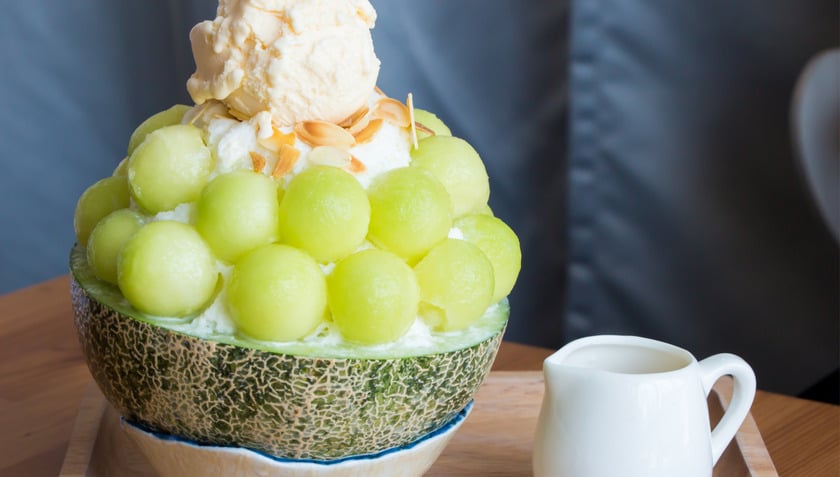
Diners can choose to add toppings to complete the flavor of the cool bingsu.
Today, the creativity in the world of bing su is limitless. Besides the traditional Patbing su, we have fruit bing su using shaved ice from frozen milk, topped with Irwin mango (apple mango), strawberries, peaches, grapes, melon or watermelon. The unique black sesame bing su (heugimja bing su) has roasted black sesame and sticky sesame rice cakes as toppings. Dessert chains like Sulbing have also elevated bing su to culinary art, with creations such as inside a melon skin with cheese and sour cream, or the Chocolate Dubai bing su version combining kadayif, pistachios and chocolate that has "stormed" social media.

The popularity of bingsu has created a diverse picture of prices. In the high-end segment, luxury hotels do not hesitate to create luxurious bingsu dishes, becoming "virtual life props" sought after on social networks. The Shilla Seoul Hotel is famous for its Jeju mango apple bingsu priced up to 110,000 won (about 80 USD), while Four Seasons Seoul also joins the bandwagon with red bean bingsu priced at 89,000 won (nearly 65 USD) and a Jeju mango version priced at a "huge" 149,000 won (109 USD). These prices are sometimes controversial, but supporters say they reflect the superior quality of ingredients and a distinct customer segment.

Bing su today has become an indispensable part of young people in the land of Kim Chi.
Despite its initial lavish image, bingsu today still maintains its position as a budget-friendly street food. Compact bingsu cups, versions designed for one person, are becoming increasingly popular, especially in the context of Korea's increasingly high rate of single people.
Many major coffee chains are quickly catching on to this trend. At Ediya Coffee, a serving of bingsu costs around 6,300 won (over $4.50), while Mega Coffee offers Patbingsu for just 4,400 won (over $3). These affordable but quality versions often sell out after going viral on social media.
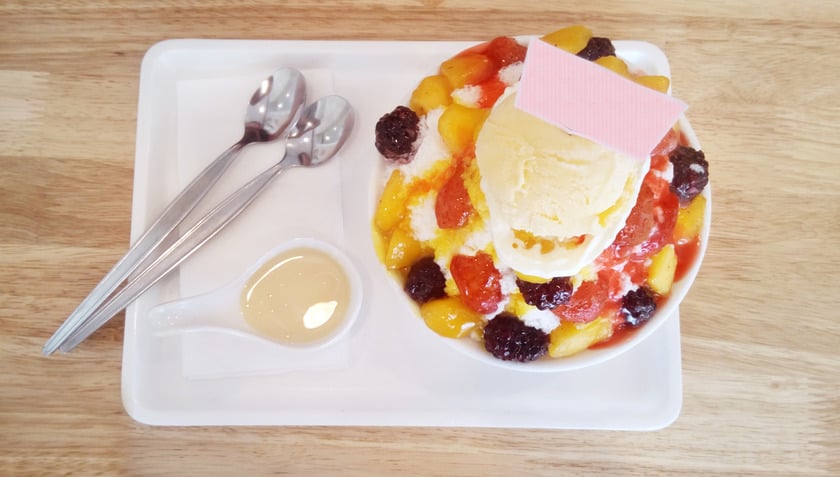
After a long journey of formation and development, until now, Bingsu is still a familiar and precious snack of Korea. The popularity and appeal of Bingsu has now spread to every country.
From a rare royal dessert during the Joseon Dynasty, bingsu has transformed into an indispensable summer icon in Korean culinary culture. Whether it is the traditional Patbing su version imbued with cultural identity or the modern variations covered with luxurious gold leaf, bingsu always maintains its appeal thanks to the harmonious combination of refreshing cool flavor and the ability to flexibly adapt to diverse consumer tastes.






